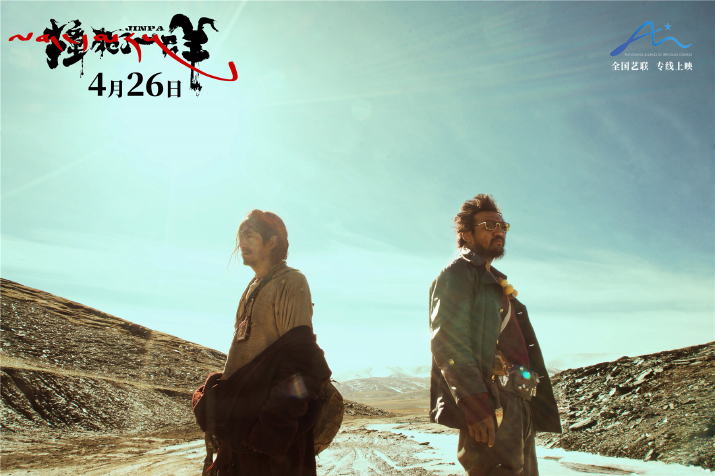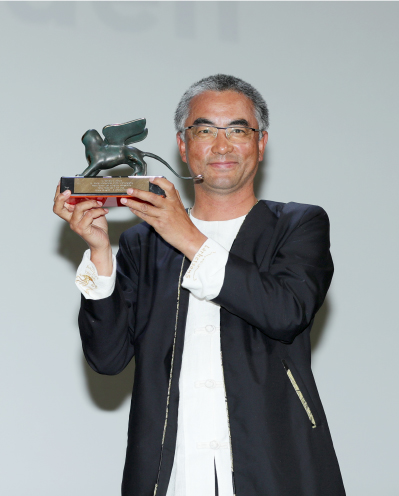| Lifestyle |
| Lost in Tradition | |
| Pema Tseden's new movie adopts avant-garde techniques in this unique tale of morality | |
|
|
 A poster of Jinpa (FILE)
Jinpa, the sixth feature film by Tibetan director Pema Tseden, hit the screen on April 26, two days after U.S. superhero film Avengers: Endgame premiered in China. It bagged a box office income of over 10 million yuan ($1.47 million) as of May 8 with an audience of 300,000. Many films have changed their release date for fear of being overshadowed by the blockbuster. However, arthouse films like Jinpa still chose to go ahead as they have a different audience from commercial films. The film won Best Screenplay in the Horizons section at the 75th Venice Film Festival last year. Its screenplay is based on the novels The Slayer by Tsering Norbu and I Ran Over a Sheep by Pema Tseden. The film is only shown in theaters which are members of the National Alliance of Arthouse Cinemas. The alliance has a membership of 3,222 theaters in 248 cities across the country, with a total of 3,795 screens dedicated to art films. A change of pace On a road traversing a vast barren plateau, a truck runs over a sheep and the truck driver, Jinpa, carries the sheep to his truck and decides to travel hundreds of miles to seek redemption in a temple. On the journey, the driver Jinpa gives a ride to another Jinpa, who is on his way to find a man who killed his father to seek revenge. Compared with his previous films such as The Silent Holy Stones (2006), which bore the imprint of Iranian director Abbas Kiarostami who is known for child-friendly themes, Jinpa marks a departure from the director's previous works which focus on depicting reality. The Silent Holy Stones follows a young Lama's life across three days from a remote monastery and documents his enthusiasm for life: eager to learn and curious about everything. The director chose mostly nonprofessional actors and a semi-documentary style to present Tibetan people's lives. In Jinpa however, the director included elements of horror and revenge. Dream scenes were used to explore ethereal moments and three color schemes were used to represent retrospection, reality and dream states. He also used a 4:3 aspect ratio, similar to the old TV format but squarer than the present-day silver screen, to prevent the audience from placing the action in any particular period. There are many images and metaphors in the film that are open for interpretation, such as the dead sheep, the sunglasses worn by the driver, a nod to Hong Kong director Wong Kar-wai who is the executive producer of the film, and the small inn. But Pema Tseden claimed he didn't do this purposefully but the style of the film is determined by the content of the novels. The conflict between tradition and modernity runs through the film. The director told the media that he wanted to end the tradition of revenge which is deep-seated in certain areas in southwest China. "If someone kills your father, you should avenge your father and the offspring of the one you killed will kill you when they grow up. I don't think this is a good tradition and want it to end," the director said. In the film, Jinpa seeking revenge finds the man who killed his father but comes to an alternative conclusion. However, he feels shamed by not killing the man because of the profound influence of local traditions on him. The driver helps him fulfill his revenge by killing the man in his dream. "Just as life is a cycle in Buddhism, revenge is also a cycle and the revenger Jinpa wants to break such a violent and bloody sequence," the director said. The two protagonists contrast each other. The driver Jinpa looks strong but is benevolent inside, which is why he wants to seek redemption for the sheep he killed. On the contrary, the revenger Jinpa looks thin and weak on the outside but is entangled in revenge inside. Nevertheless, at the end of the story, the revenger becomes tender seeing that the man he wanted to kill became old while the driver becomes violent in his dream and kills the man for his new companion. The Tibetan proverb "If I tell you my dream, you might forget it; but if I allow you into my dream, my dream will become your dream" is the key to understanding the movie and is used as a voiceover on the trailer.  Pema Tseden shows his prize at the 75th Venice Film Festival on September 8, 2018 (XINHUA)
Breaking the mold The movie is filmed in the local Tibetan language because the director wants to create a sense of detachment among the audiences to enable them to view the film in a more objective way. A Tibetan-language version of the famous Italian song O Sole Mio is used in the movie to switch time and location. "A Tibetan-language version of the song adds to the absurdity of the movie," the director said. As with other art films, the director found it hard to secure funding. He had the idea of the film in 2000 but didn't raise enough funds for it until 2017, when Jet Tone Films, the studio owned by Wong, agreed to finance and produce the film. The director said it's a thrill to work with prominent filmmakers like Wong who gave him ample freedom with his creation. Pema Tseden said in recent years Tibetan-themed movies have become more diversified and people's understanding of Tibetan culture has improved thanks to movies and literary works that more truthfully reflect Tibetan culture. However, he said Tibetan films still face many challenges as the domestic film market is dominated by Mandarin-language films. Nevertheless, he believes as the market for ethnic minority language movies expands, the situation will improve. About Pema Tseden The writer-turned-director Pema Tseden was born in Hainan Tibetan Autonomous Prefecture in northwest China's Qinghai Province in 1969. He developed a love for cinema in childhood watching films. He started to publish literary works in 1991, the year he attended Northwest Minzu University based in Lanzhou, northwest China's Gansu Province. After receiving a bachelor's degree in Tibetan language and literature, he became a primary school teacher. He went on to study for a master's degree in Tibetan-Mandarin translation. He then served as a public servant for five years before going to study filmmaking at the Beijing Film Academy. He is regarded as a leading director of the Tibetan New Wave, the group of emerging ethnic Tibetan filmmakers over the past decade, with his award-winning films including Old Dog (2011) and Tharlo (2015). Copyedited by Craig Crowther Comments to jijing@bjreview.com
|
|
||||||||||||||||||||||||||||
|
